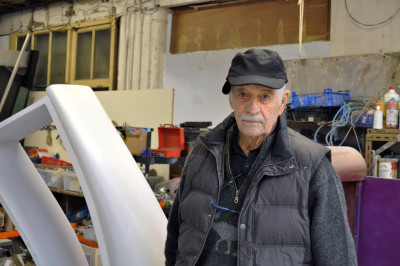In memoriam: Dame Elizabeth Blackadder RA
In memoriam: Dame Elizabeth Blackadder RA
By Victoria Crowe
Published 12 December 2021
Victoria Crowe remembers the Scottish painter’s elegant and analytical style.
-
From the Winter 2021 issue of RA Magazine, issued quarterly to Friends of the RA.
I joined the staff at Edinburgh College of Art (ECA) in 1968 having just completed my postgraduate studies at the Royal College of Art in London. During my degree show, I was invited to come north to teach. ECA in the 1960s was certainly different and something of a culture shock. The painting school had an excellent reputation and an ethos forged by the values of several generations of Edinburgh painters. The teaching was rigorously timetabled with a strong emphasis on drawing, and a wide array of models for life and anatomy classes. Among my new peer group were three female lecturers, one of whom was Elizabeth Blackadder. Quiet and shy, she was nevertheless at the heart of that circle of contemporary Scottish painters.
Though supported and nurtured by this shared ethos, Elizabeth had a different perspective. As a student she took the fine art degree course run jointly between Edinburgh University and the art college. Professor Talbot Rice, the Byzantine specialist, was the head of Department. Consequently, Elizabeth became drawn to the imagery of medieval art, and the Italian ‘Primitives’. She spoke of her early still-life works, with their tipped-up tabletops, as being really just the same as still-life objects realised in medieval mosaics. Another key interest was identifying and drawing flowers, and there was talk of her becoming a botanist as opposed to an artist.
-
Dame Elizabeth Blackadder RA, Still Life on White, 1968.
-
By the 1970s Elizabeth’s reputation as a painter was flourishing. She had made many research trips to Europe and America with her husband and fellow artist John Houston, and they set up studios together in their Edinburgh house. John was the outgoing personality complementing Elizabeth’s reticence, and a constant support through her career. This remarkable artistic duo were also, I’m told, formidable partners on the tennis court.
Elizabeth enjoyed huge respect from staff and students alike; she had a completely non-egotistical way of teaching. Occasionally, her contribution to their tuition was simply to draw in the life class with them. She was a superb draughtsman and drawing underpinned all of her work. Her beautiful yet analytical marks create a tension between the abstract and the closely observed. Her early drawings of landscape have this quality, as do the drawings she made in Italy during her travel scholarships as a young artist. The complexity of the Gothic architecture of, for example, the Duomo in Siena was drawn with a dip pen and Indian ink, and in these fluid, direct drawings we have the duality of energy and restraint.
In 1985 Elizabeth and John visited Japan for the first time. It was a revelation to both of them. The structures of shrines and pierced screens, the pattern of raked sand filling spaces between rocks and plants, decorated boxes and papers, became the inspiration for her mature painting, where images flow over the surface with intuitive placing. Her later works on paper continue to develop these starting points using the absorbant and flecked Japanese paper and exploiting the medium of watercolour and ink.
A fruitful collaboration over many years with Glasgow Print Studio extended her mark-making over a wide range of subject matter: wonderful images of shrines in Kyoto, drawings from Italy, her beloved cats, and a selection of orchids and seedheads that combine her analytical draughtsmanship with the the soft amorphous flow of colour.
Elizabeth and her career remain something of an enigma; the reticent artist, disliking to talk about her work, not chasing recognition and saying she ‘didn’t know much’ about printmaking, yet becoming one of the most significant woman artists in the UK. Her work is in important collections worldwide, she was the first woman to become a member of both the RA and Royal Scottish Academy, she was Her Majesty the Queen’s Painter and Limner in Scotland, and was awarded a Damehood among many honours. She will be remembered with great affection.
Victoria Crowe is a painter and member of the Royal Scottish Academy of Art and Architecture.




